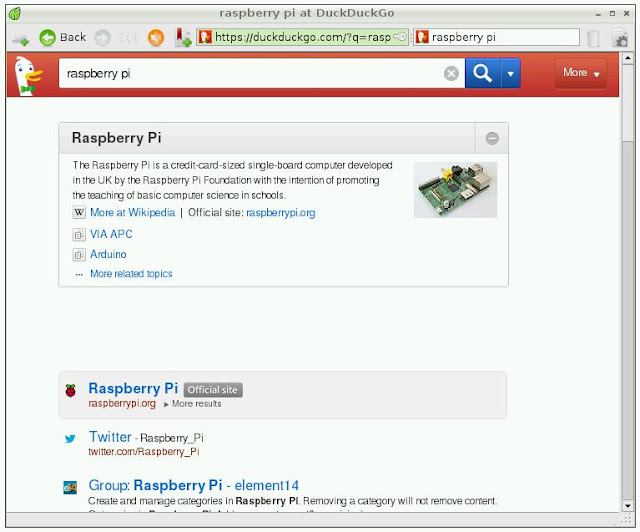pi@raspberrypi ~ $ uname -a_
To find out the version of the firmware installed on your system "sudo vcgencmd version" at the command line prompt and press Enter:
pi@raspberrypi ~ $ sudo vcgencmd version_
You should get results similar to what is shown in the following screenshot:
You can use a package called "rpi-update" to update the Linux kernel and the firmware on your Raspberry Pi, but this package is not available through the repository so you will have to download and install it manually. First of all though, you need to carry out a couple of preparatory tasks.
The first task is to ensure that your Raspberry Pi has the correct date and time by querying a Network Time Protocol (NTP) server. To install the necessary software type "sudo apt-get install ntpdate" at the command line prompt and press Enter:
pi@raspberrypi ~ $ sudo apt-get install ntpdate_
To use "ntpdate" to retrieve the correct time and date from a NTP server (in this case the NTP server at the National Physical Laboratory) type "sudo ntpdate -u ntp1.npl.co.uk" at the command line prompt and press Enter:
pi@raspberrypi ~ $ sudo ntpdate -u ntp1.npl.co.uk_
To ensure that your system has the latest security certificates type "sudo apt-get install ca-certificates" at the command line prompt and press Enter:
pi@raspberrypi ~ $ sudo apt-get install ca-certificates_
Next, you need to download and install the "git" package from the repository. To do this type "sudo apt-get install git" at the command line prompt and press Enter:
pi@raspberrypi ~ $ sudo apt-get install git_
Now you are ready to download and install the "rpi-update package. Type "sudo wget http://goo.gl/1BOfJ -O /usr/bin/rpi-update" at the command line prompt and press Enter:
pi@raspberrypi ~ $ sudo wget http://goo.gl/1BOfJ -O /usr/bin/rpi-update_
Finally to set up the necessary file permissions type "sudo chmod +x /usr/bin/rpi-update" at the command line prompt and press Enter:
Although it is not strictly necessary to update your Raspberry Pi's Linux kernel and firmware in this way it may be useful to know how to do it if you encounter any problems with (for example) unsupported hardware, as the problem may have been resolved by a later version of the Linux kernel or firmware. All software, and especially open source software like Linux evolves over time as new functionality is added and bugs are found and fixed, so it is always useful to have the latest versions of system software.
Now you are ready to download and install the "rpi-update package. Type "sudo wget http://goo.gl/1BOfJ -O /usr/bin/rpi-update" at the command line prompt and press Enter:
pi@raspberrypi ~ $ sudo wget http://goo.gl/1BOfJ -O /usr/bin/rpi-update_
Finally to set up the necessary file permissions type "sudo chmod +x /usr/bin/rpi-update" at the command line prompt and press Enter:
pi@raspberrypi ~ $ sudo chmod +x /usr/bin/rpi-update_
You are now ready to run "rpi-update". Type "sudo rpi-update" at the command line prompt and press Enter:
pi@raspberrypi ~ $ sudo rpi-update_
This will produce a lot of text scrolling up your screen followed by a lengthy download (nearly 40 MB) and install process (I suggest you go and make yourself a cup of coffee while it is going on).
When finished and you are back to the command line prompt shut down your Raspberry Pi and restart it for the updates to become effective. Once you are back at the command line prompt (or an LXTerminal window) you can check what versions of kernel and firmware you have by using the "uname -a" and "sudo vcgencmd version" commands again. When I did this today I obtained the results shown in the following screenshot.
You can see that the Linux kernel on my Raspberry Pi is now version 3.6.11+ (previously 3.2.27+) and the firmware is now version 367974 (previously 346337).
You are now ready to run "rpi-update". Type "sudo rpi-update" at the command line prompt and press Enter:
pi@raspberrypi ~ $ sudo rpi-update_
This will produce a lot of text scrolling up your screen followed by a lengthy download (nearly 40 MB) and install process (I suggest you go and make yourself a cup of coffee while it is going on).
When finished and you are back to the command line prompt shut down your Raspberry Pi and restart it for the updates to become effective. Once you are back at the command line prompt (or an LXTerminal window) you can check what versions of kernel and firmware you have by using the "uname -a" and "sudo vcgencmd version" commands again. When I did this today I obtained the results shown in the following screenshot.
You can see that the Linux kernel on my Raspberry Pi is now version 3.6.11+ (previously 3.2.27+) and the firmware is now version 367974 (previously 346337).































